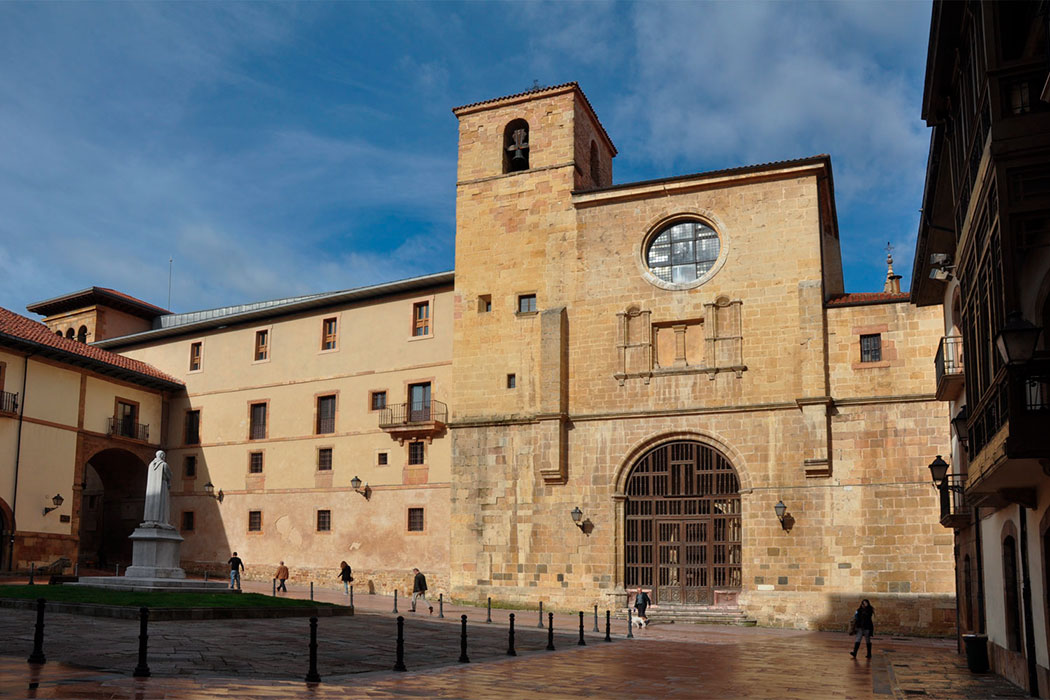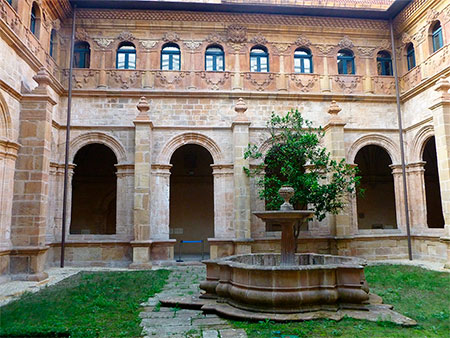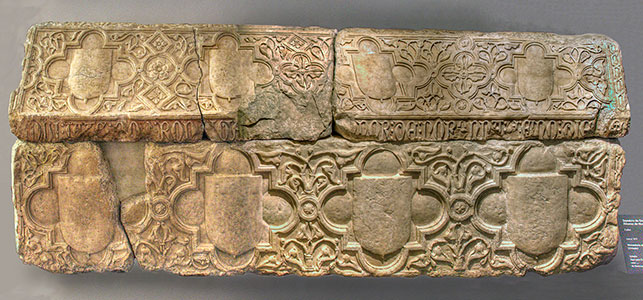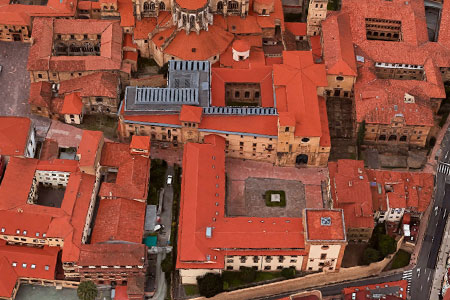Monastery of San Vicente de Oviedo
Monasterio de San Vicente / Antealtares / S Vincencii
(Oviedo / Uviéu, Asturias)
Traditionally, the origin of this Monastery of San Vicente has been linked to the very foundation of the city. According to this tradition, around the year 761, a monastic community settled in this place, and twenty years later, he would have established a monastic pact, formalized in a document known from later copies of relative reliability. These doubts become more evident if we consider that it is not until 969 that documents referencing this monastery and its community begin to appear.
The establishment is believed to have coexisted with the cathedral chapter of San Salvador de Oviedo, physically very close to one another. In an early period, the monks of San Vicente (also known by Antealtares) were also in charge of the worship at San Salvador. During the second half of the 10th century, the monastery, by then independent from the cathedral, experienced notable growth, with its financial situation secured by donations in its favour, coming from the monarchy, nobility, and also from more modest landowners. It is known that by the mid-11th century, the community followed the Rule of Saint Benedict.
This period of prosperity lasted until the mid-14th century, when both the monastery and the many priories under its jurisdiction entered a period of decline, which continued until the early 16th century. In 1515, the monastery was linked to the Congregation of San Benito in Valladolid, abandoning the regime of comendatarian abbots, who had not helped its development either spiritually or economically. With this new arrangement, the reform of its buildings was undertaken, and a prestigious college was established within its walls. Between 1589 and 1592, the historian Antonio de Yepes (c. 1552-1618) served as abbot of this monastery.
The church was rebuilt in the 16th century and the old Romanesque cloister was replaced by a new construction begun in that century. The monastery’s expansion and improvement works continued throughout the 17th and 18th centuries. In 1709, the Benedictine Jerónimo Feijoo arrived as a professor of theology; he also served as abbot and died there in 1764. In the 19th century, following the disentailment, monastic life came to an end, and the church became a parish, now under the patronage of Santa María la Real de la Corte. Part of the monastic buildings passed into public hands, and in 1952, the Provincial Archaeological Museum was inaugurated there.
- CALLEJA PUERTA, Miguel (2011). Fundaciones monásticas y orígenes urbanos. La refacción del documento fundacional de San Vicente de Oviedo. Iglesia y ciudad: Espacio y poder (siglos VIII-XIII)
- ESCORTELL, Matilde (1974). Guía – Catálogo del Museo Arqueológico Provincial. Oviedo. Museo Arqueológico
- FLOREZ, Henrique (1824). España Sagrada. Tomo XXVII. Madrid: José del Collado
- GARCÍA ÁLVAREZ-BUSTO, Alejandro; ed. (2020). Asturias monástica. Catálogo de monasterios y revisión histórica arqueológica (siglos XI-XIX). Vol. 1. Anejos de Nailosn núm. 7. Ovedo: KRK Ed.
- GARCÍA GUINEA, Miguel Ángel; dir. (2006). Enciclopedia del Románico en Asturias. Aguilar de Campoo. Fundación Santa María la Real
- MANZANARES RODRÍGUEZ, Joaquín (1951). Fragmentos románicos del monasterio de San Vicente de Oviedo. Archivum, núm. 1
- MARTÍNEZ VEGA, Andrés (2011). Monasterios medievales de Asturias. Oviedo: Cajastur, 2011
- MORALES, María Cruz; dir. (1993). Orígenes. Arte y cultura en Asturias. Siglos VII-XV. Barcelona Lunwerg
- SANZ FUENTES, María Josefa (1986). Más documentos del Monasterio de San Vicente anteriores a 1200. Asturiensia medievalia, núm. 5








